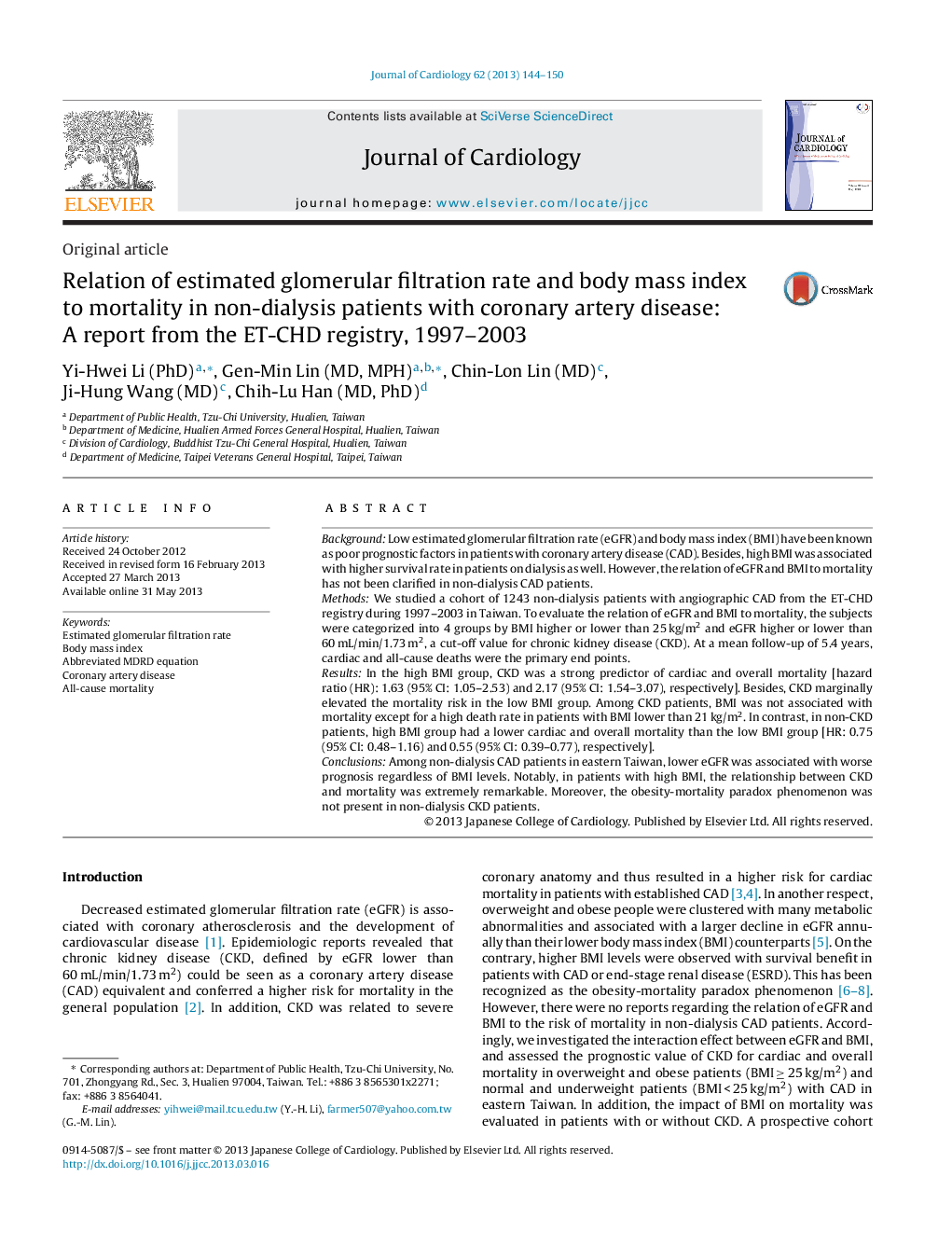| Article ID | Journal | Published Year | Pages | File Type |
|---|---|---|---|---|
| 5984307 | Journal of Cardiology | 2013 | 7 Pages |
BackgroundLow estimated glomerular filtration rate (eGFR) and body mass index (BMI) have been known as poor prognostic factors in patients with coronary artery disease (CAD). Besides, high BMI was associated with higher survival rate in patients on dialysis as well. However, the relation of eGFR and BMI to mortality has not been clarified in non-dialysis CAD patients.MethodsWe studied a cohort of 1243 non-dialysis patients with angiographic CAD from the ET-CHD registry during 1997-2003 in Taiwan. To evaluate the relation of eGFR and BMI to mortality, the subjects were categorized into 4 groups by BMI higher or lower than 25Â kg/m2 and eGFR higher or lower than 60Â mL/min/1.73Â m2, a cut-off value for chronic kidney disease (CKD). At a mean follow-up of 5.4 years, cardiac and all-cause deaths were the primary end points.ResultsIn the high BMI group, CKD was a strong predictor of cardiac and overall mortality [hazard ratio (HR): 1.63 (95% CI: 1.05-2.53) and 2.17 (95% CI: 1.54-3.07), respectively]. Besides, CKD marginally elevated the mortality risk in the low BMI group. Among CKD patients, BMI was not associated with mortality except for a high death rate in patients with BMI lower than 21Â kg/m2. In contrast, in non-CKD patients, high BMI group had a lower cardiac and overall mortality than the low BMI group [HR: 0.75 (95% CI: 0.48-1.16) and 0.55 (95% CI: 0.39-0.77), respectively].ConclusionsAmong non-dialysis CAD patients in eastern Taiwan, lower eGFR was associated with worse prognosis regardless of BMI levels. Notably, in patients with high BMI, the relationship between CKD and mortality was extremely remarkable. Moreover, the obesity-mortality paradox phenomenon was not present in non-dialysis CKD patients.
